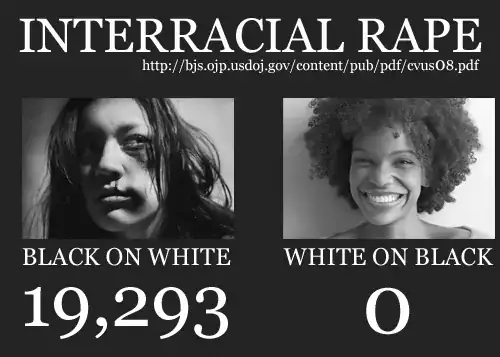The 2008 report surveyed 67,090 people (see pdf page 121) out of a population base of 252 million people (see table 5). 67,090 people is 0.000266 of the population.
In table 42, which shows single-offender crimes by victim and offender race, an extrapolated 46,580 black rape or sexual assault victims are reported. This corresponds to approximately 12 people in the actual survey.
The data in table 42 is consistent with 8 of the 12 saying they were raped or sexually assaulted by a black offender and 4 people saying they were raped or sexually assaulted by a person of unknown race (and zero saying "white" or "other").
For more data see:
Fraction of offenders reported to be white by black victims of rape or sexual assault:
2008 0%
2007 0%
2006 0%
2005 0%
2004 0%
2003 0%
2002 14%
2001 13%
2000 7%
1999 0%
1998 7%
1997 0%
1996 14%
So, based upon the available data, about 5% of black victims of rape or sexual assault report that their offender was white.
